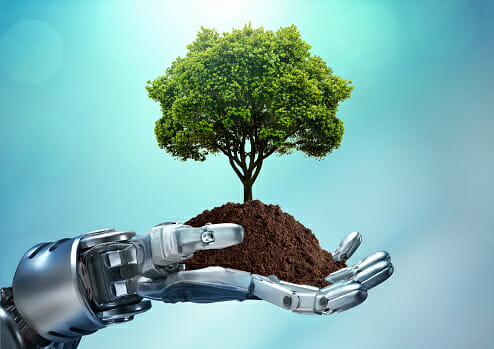Environmental concerns are more pressing than perhaps they ever have been. Boardrooms and parliaments around the world are talking about how things can be made greener – under pressure from both science and grassroots activists.
If these environmental challenges are to be overcome, then technology will play a crucial role. Several technologies in particular are likely to be pivotal. Let’s consider them.
Renewable energy
2020 saw renewable energy provide more power in the UK than coal and gas for the first time. The solar capacity of the country had grown at that point from around two thousand megawatts to more than thirteen thousand. If the net zero targets for 2050 are to be met, however, this change would need to accelerate – since an additional 40GW is required.
Businesses might invest in renewables in several different ways. They might put some money into on-site generators, or into batteries. They might also think about investing in renewable power directly, via an arrangement with the supplier that lasts over more than a decade.
Industrial Gas Cleaning
Emissions from industrial sites are also a problem – and, in many cases, an inescapable one. Firms might look to limit the damage either by revising their practices and methods or by investing in the right technology. Technological air pollution solutions might also be used to prevent these gases from escaping into the atmosphere.
Energy storage
Intermittency is one of the main obstacles to the widespread adoption of renewable energy sources. Since the sun only shines and the wind only blows for some of the time, we need a way of storing the excess – or seeing it wasted. This is where the development of new battery technologies might result in explosive growth.
There are a few ways in which energy might be stored. We might, for example, use excess energy to pull a weight to the top of a tower, and then harvest the energy generated when it comes back down. Solid-state batteries and other technologies are set to make this a great deal more cost-effective.
Smart Grids
A smart grid would allow for a two-way flow of energy, with energy generated by households being easily fed into the grid. It would also allow for the energy itself to be distributed in a more efficient way, and for homeowners to monitor and optimise their consumption. Smart grids would, in other words, allow us to get the best from the systems we have, as well as helping in the creation of new ones.
Environmental monitoring
Environmental monitoring means keeping watch over the impact of an organisation’s activities on the surrounding environment. It might use this information in much the same way as safety data is used in a risk assessment.
As highlighted above, technology plays a crucial role in paving the way for a more sustainable future. Through offering innovative solutions to address environmental challenges along with continuous development and application of green technologies we could have the potential to address the climate crisis on a global scale.








